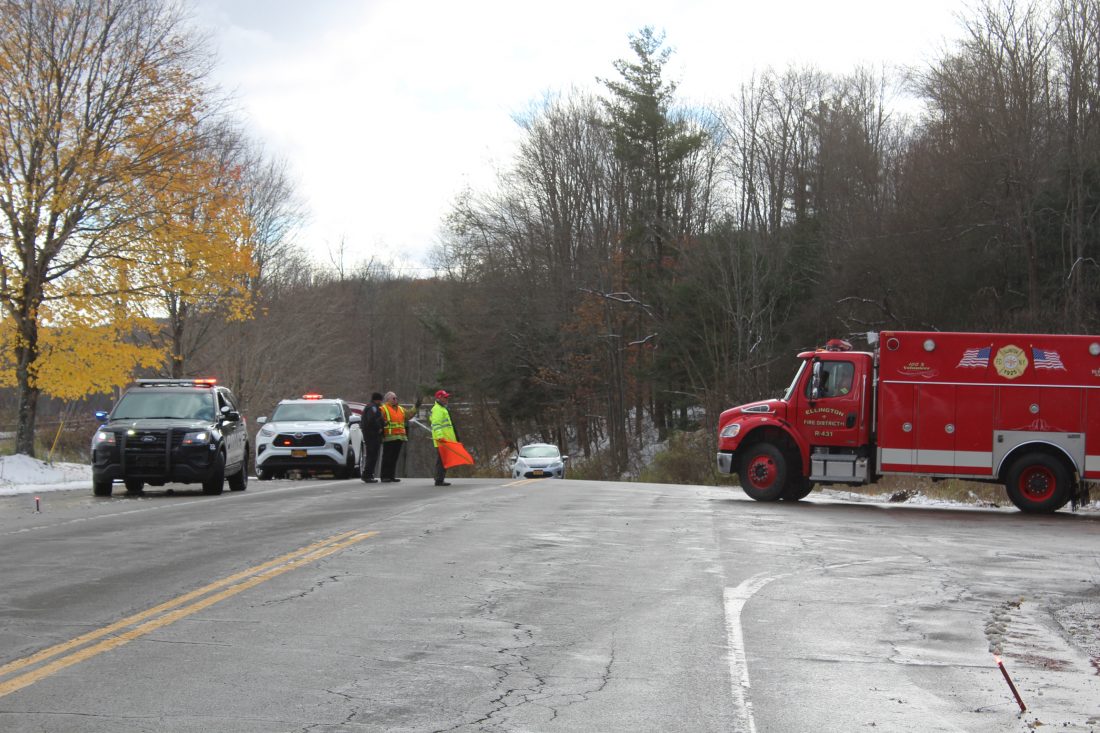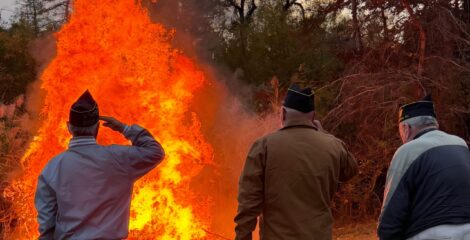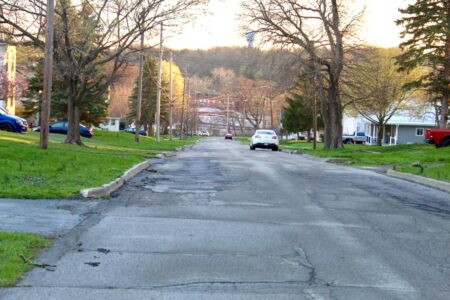NTSB: Pilot discussed weather, ‘avoiding ice’ before crash

OBSERVER file photo First responders are pictured Nov. 2, 2020, during the search for a plane that went missing as it approached the Chautauqua County-Jamestown Airport.
The pilot of the twin-engine plane that crashed a mile from the Chautauqua County-Jamestown Airport on Nov. 1 reported experiencing snow and “light to moderate” turbulence to air traffic control shortly before contact was lost.
There was no mention of ice accumulation between the pilot, Warren, Pa., resident Alan Fuller, and the tower located at the Buffalo-Niagara International Airport.
However, according to a preliminary report by the National Transportation Safety Board, Fuller and his flight instructor discussed “weather decisions and avoiding ice” by phone prior to the crash.
Fuller was with two passengers, Valerie Holmes and Linda Edwards, when their Grumman American GA-7 lost contact with air traffic control around 5:47 p.m. The plane was returning to the Jamestown airport, located north of the city in the town of Ellicott, following a trip that began Oct. 28 to Burlington, North Carolina.
A large-scale search for the missing plane ensued amid wintry conditions. The wreckage was located the following morning on Nov. 2 on a steep embankment off Route 60, north of Turner Road. All three were killed in the crash.
The NTSB report notes that Fuller’s flight instructor, who’s not identified by name, learned that Fuller and his two passengers were set to fly into Jamestown that evening.
“He hoped that the pilot would divert and sent him a text message to that effect,” the report states. “The flight instructor subsequently drove to the airport and listened to air traffic control communications as well as common traffic advisory frequency communication. The flight instructor added that the weather was conductive to icing.”
In addition to snow and turbulence, Fuller said in a pilot report requested by air traffic control of being in and out of the clouds while inbound and experiencing updrafts and downdrafts.
Radio contact was lost about 1 1/2 miles northeast of the Jamestown airport with no further communication between the tower and plane.
The preliminary report states that a witness who lives near the airport was hunting in a tree stand when he heard a “loud engine noise” for 10 to 15 seconds followed by silence. The tree stand was located about three-quarters of a mile northeast of the wreckage.
“Later that evening, the witness was notified that there had been an airplane accident and he assisted first responders in their search for the airplane,” the report states. “The witness subsequently observed tops of trees severed where he heard the engine noise increase.”
The damaged trees were located about a quarter-mile east of the wreckage.
The plane came to rest upright, with the left engine separated, the NTSB reported. All major components of the plane were accounted for at the scene.
Officials did not travel to the crash site; the wreckage was recovered and shipped to Tennessee.
Following the plane’s discovery, Chautauqua County Sheriff James Quattrone held a press conference and noted that weather may have played a role in the accident.
According to the National Weather Service, winds were at 22 mph at the recorded time of 5:56 p.m., with gusts reaching 35 mph. The temperature was around 30 degrees, with conditions described as light snow, fog/mist and breezy. There was also 1 mile of visibility at the time.
The NTSB said its report is preliminary and that information is subject to change. A final report will be filed at a later date.






